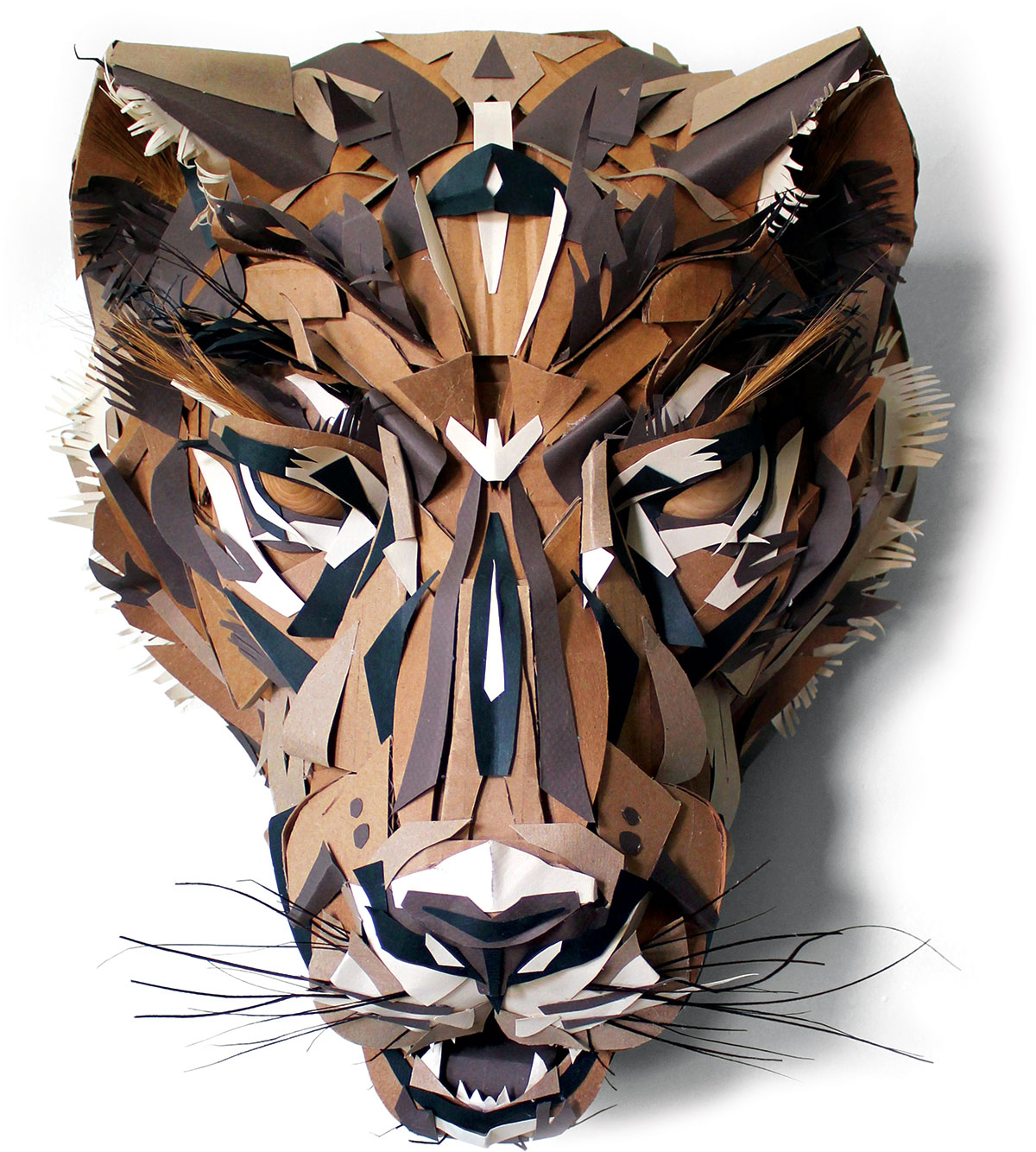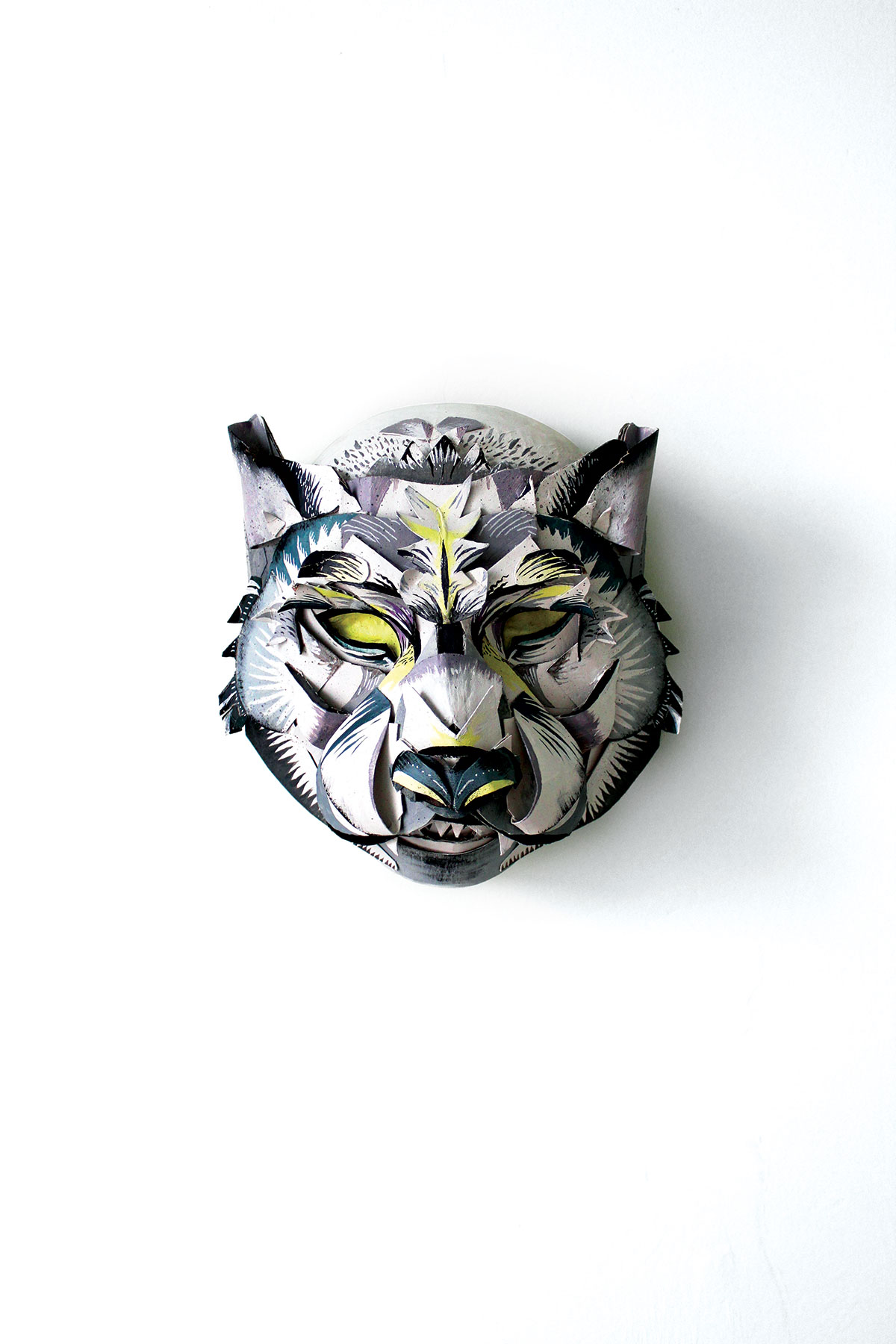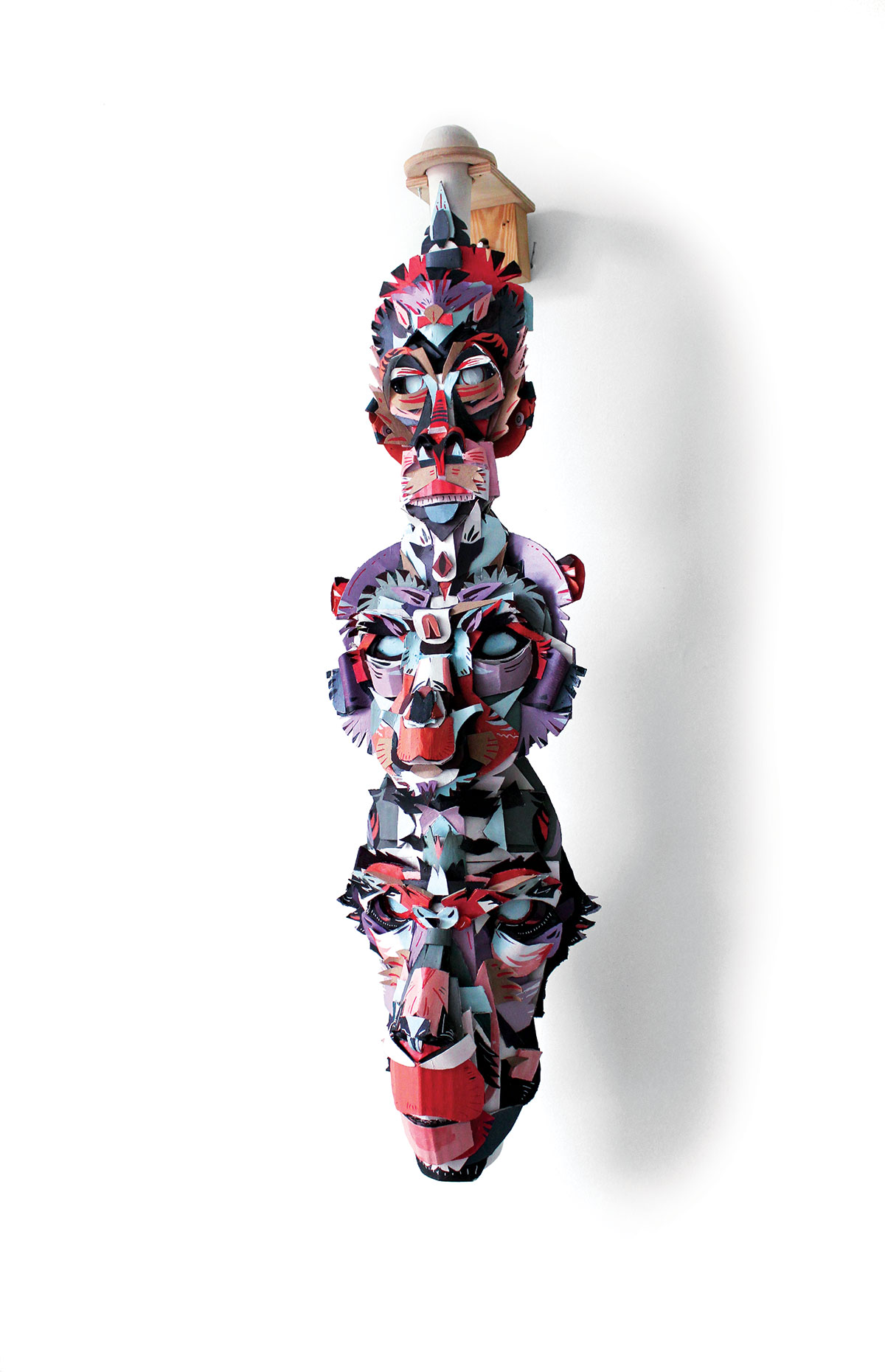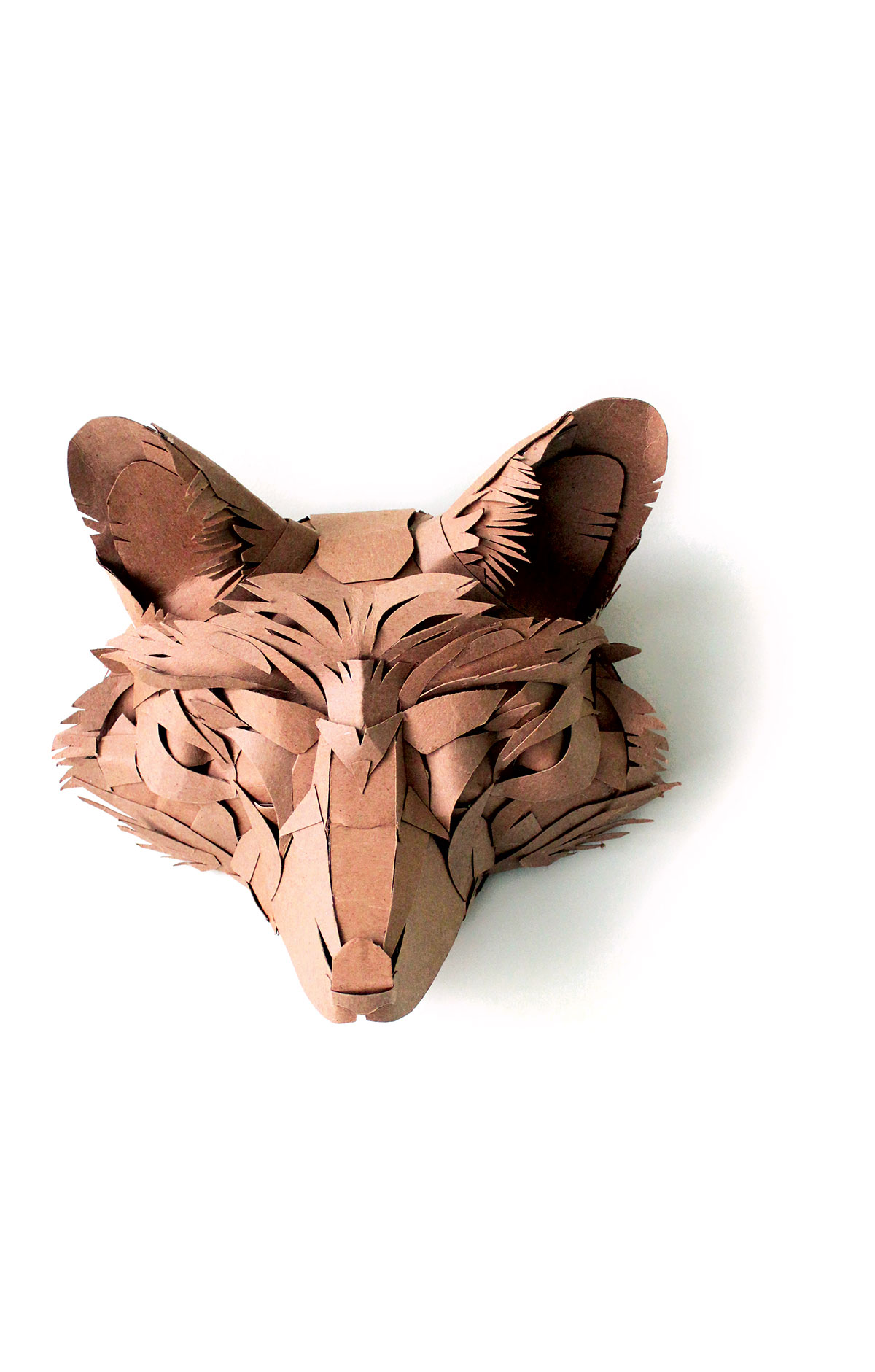
Robert Bloch, the author of Psycho, once declared, “Horror is the removal of masks.” And he knew from horror, having worked in vaudeville. What, then, to make of the mask makers? What grisly secrets are they hiding? From what are we being shielded?
Jacqui Oakley’s masks appear to be playful recreations of popular woodland creatures. Don’t be deceived. Woodland creatures thrive on other woodland creatures—cute little animals they hunt down and eat before, of course, the hunters are themselves consumed. Nature is as adorable as a machete, and twice as effective.
In her day job hours, the Hamilton-based artist is the go-to illustrator for a specific type of high-concept, hybridized imagery—fusions of the chirpy and the caustic, the plush and the imperilled. It’s hardly surprising that her foray into mask making has resulted in a similar push-pull. Comprised of strips of layered corrugated cardboard, the masks are full of romper-room wonder and a keen, wonderfully counterintuitive, feral energy. Nothing made out of paper should have such fangs or razor-wire whiskers, should carry such promises of torn flesh and snapped bones.
But context is everything. “Growing up in the Middle East, I only really saw the odd camel herd, and geckos on our ceiling,” Oakley says. “But visiting England each summer, the countryside held all sorts of ‘exotic’ animals, such as squirrels, badgers, and hedgehogs. I would spend my time filling up sketchbooks with drawings of these strange creatures.”
Oakley describes her masks as spontaneous acts, works she builds freeform, without a plan or goal—which leads to Jungian questions about Oakley’s subconscious, and the happy and/or hungry animals that bounce around inside it. But that would be prying. Besides, we already have the final products, works loaded with mystic energies and crinkly secrets.




